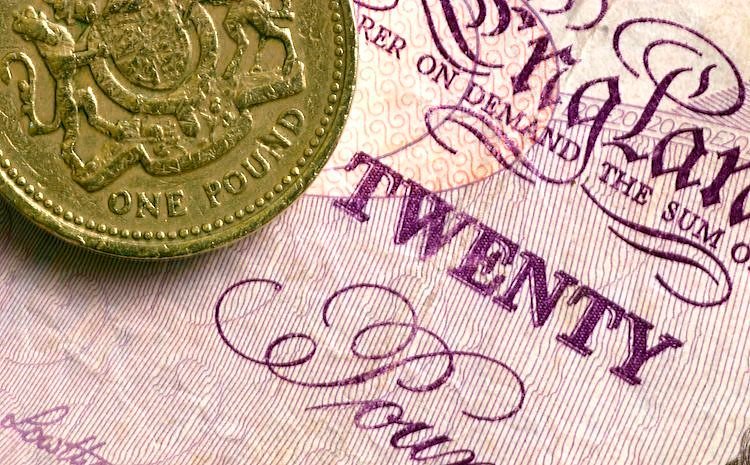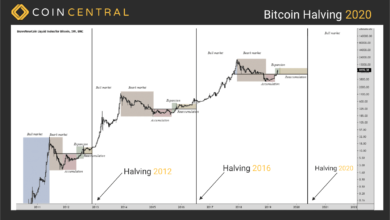Pound Sterling rises against US Dollar as focus shifts to Fed Powell’s testimony

The Pound Sterling (GBP) clings to gains, trading around 1.2670 on Monday’s European session as investors price in that the Bank of England (BoE) won’t lower interest rates anytime soon. The United Kingdom’s (UK) inflation rate remains the highest in the Group of Seven economies (G-7), forcing BoE policymakers to hold interest rates in the restrictive territory for a longer period.
Solid wage growth, which quickly feeds into inflation in the services sector, has kept the outlook of the UK’s core Consumer Price Index (CPI) sticky. BoE policymakers believe that the pace at which labor costs and service inflation are growing still doubles the pace required for inflation to sustainably return to the 2% target.
Prospects of higher interest rates benefit the Pound Sterling as this tends to attract higher foreign inflows.
This week, a light UK economic calendar could allow the market sentiment to guide the GBP/USD pair majorly. In the United States, Federal Reserve (Fed) Chair Jerome Powell’s testimony before Congress and the Nonfarm Payrolls (NFP) data will impact the market sentiment as they could provide fresh insights about when the Fed could start reducing interest rates.
The Pound Sterling extends its upside to 1.2670 after a strong recovery from the round-level support of 1.2600. The major approaches the downward-sloping border of the Descending Triangle pattern formed on a daily time frame, placed from December 28 high at 1.2827. The horizontal support of the aforementioned chart pattern is plotted from December 13 low near 1.2500.
A Descending Triangle pattern exhibits indecisiveness among market participants but with a slight downside bias due to lower highs and flat lows.
The 14-period Relative Strength Index (RSI) remains inside the 40.00-60.00 region, indicating a sharp
What is the Pound Sterling?
The Pound Sterling (GBP) is the oldest currency in the world (886 AD) and the official currency of the United Kingdom. It is the fourth most traded unit for foreign exchange (FX) in the world, accounting for 12% of all transactions, averaging $630 billion a day, according to 2022 data.
Its key trading pairs are GBP/USD, aka ‘Cable’, which accounts for 11% of FX, GBP/JPY, or the ‘Dragon’ as it is known by traders (3%), and EUR/GBP (2%). The Pound Sterling is issued by the Bank of England (BoE).
How do the decisions of the Bank of England impact on the Pound Sterling?
The single most important factor influencing the value of the Pound Sterling is monetary policy decided by the Bank of England. The BoE bases its decisions on whether it has achieved its primary goal of “price stability” – a steady inflation rate of around 2%. Its primary tool for achieving this is the adjustment of interest rates.
When inflation is too high, the BoE will try to rein it in by raising interest rates, making it more expensive for people and businesses to access credit. This is generally positive for GBP, as higher interest rates make the UK a more attractive place for global investors to park their money.
When inflation falls too low it is a sign economic growth is slowing. In this scenario, the BoE will consider lowering interest rates to cheapen credit so businesses will borrow more to invest in growth-generating projects.
How does economic data influence the value of the Pound?
Data releases gauge the health of the economy and can impact the value of the Pound Sterling. Indicators such as GDP, Manufacturing and Services PMIs, and employment can all influence the direction of the GBP.
A strong economy is good for Sterling. Not only does it attract more foreign investment but it may encourage the BoE to put up interest rates, which will directly strengthen GBP. Otherwise, if economic data is weak, the Pound Sterling is likely to fall.
How does the Trade Balance impact the Pound?
Another significant data release for the Pound Sterling is the Trade Balance. This indicator measures the difference between what a country earns from its exports and what it spends on imports over a given period.
If a country produces highly sought-after exports, its currency will benefit purely from the extra demand created from foreign buyers seeking to purchase these goods. Therefore, a positive net Trade Balance strengthens a currency and vice versa for a negative balance.




